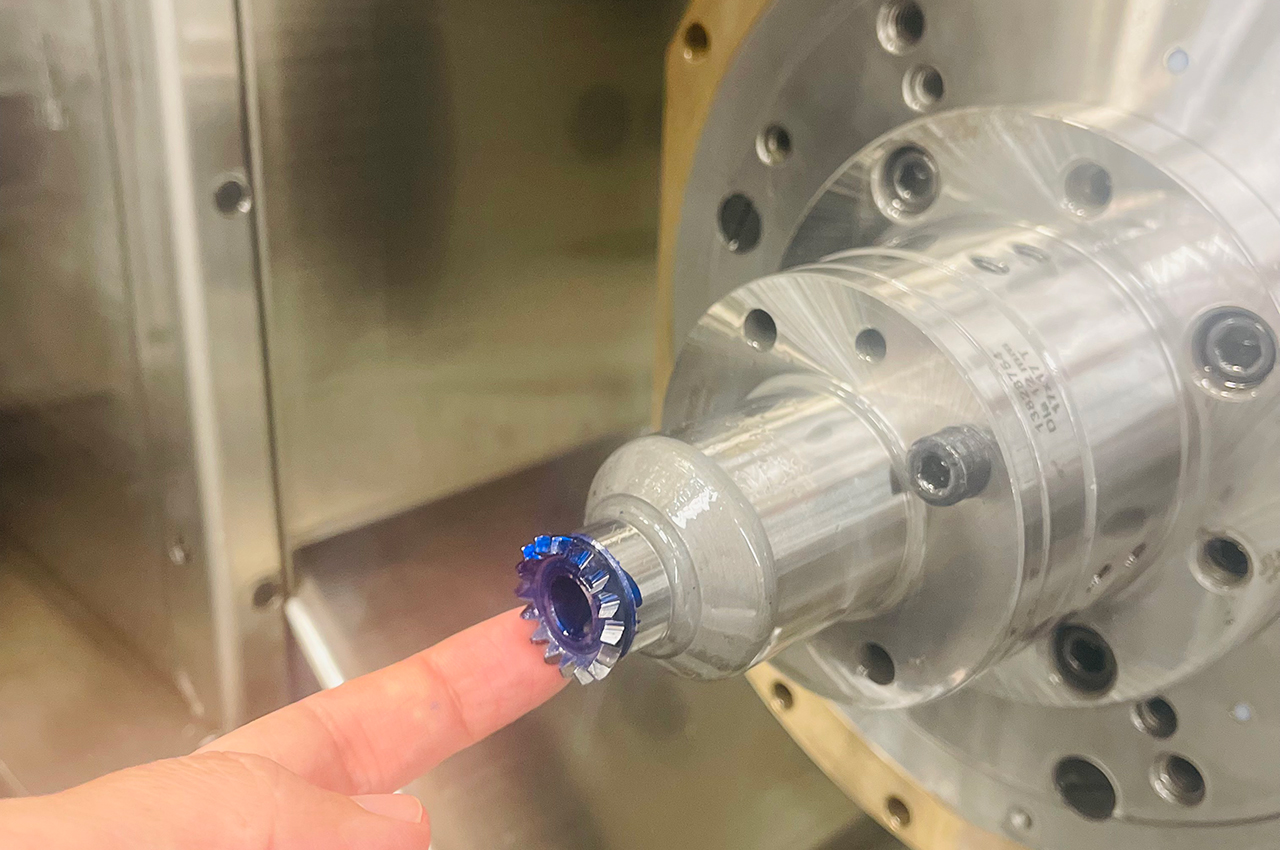
India recently made waves when Chandrayaan-3 successfully landed on the south pole of the Moon. Behind this tremendous feat, is a gear manufacturing company who played a part in this historic lunar mission.
Gear Technology India had an email interview with Mushtaq Jamal, Director, Engineering & Business Development, Bevel Gears India and Sulaiman Jamal, Managing Director, about the experience, technical challenges, and more.
Bevel Gears India has been honing its capabilities and investing in new bevel technology for several years.
Presently, these technological upgrades include cutting edge Gleason and Klingelnberg CNC spiral bevel grinding machines, CNC bevel gear cutting and CNC inspection.
These technological advancements are continually conveyed to both new and potential customers, and this was shared at various vendor meets with the government organizations.
Once the Indian Space Research Organization (ISRO) was made aware of our capabilities, they contacted us. It took 12 months for our company to be approved, and thereafter over two years to supply prototypes and the final products.
As with most programs of this nature, details are shared selectively. As you would imagine with anything space related, the requirement was the parts had to be low in weight with a specific emphasis on precision and accuracy.
Thus, in the manufacturing process, we were chasing microns (one micron is a thousandth of a millimeter) and not production cycle time as you would in high volume manufacturing. These particular bevel gears played a critical role in the Pragyan rover’s drivetrain and had to be fail-safe.
Special steel grades were used and the bevel gears had many critical processes along every step of the way. Demanding topography requirements had to be maintained, too.
A big part of the reason for our selection in this project was our ability to not only manufacture but to make machine setting summaries in house and measure very small bevel gears.
We had installed a brand-new state-of-the-art CNC Gleason 475 GMS measuring center, and this piece of equipment certainly gave the customer peace of mind. Today, we make and measure some of the smaller bevel gears in the country going down to 0.4 module.
Our role was primarily to execute to a specified design. However, any suggestions on improvements were well received. That is also testament to ISRO’s team because they were very receptive to areas of improvement.
One of the challenges was the material we needed to work with. The material was difficult to machine and wore out the tools rapidly.
This, in turn, affected the ability to maintain the close tolerances the parts required, so we had to modify our machining strategy. It is fair to say it took far longer than anticipated to machine the prototypes. However, this modified strategy helped immensely in the final part production.
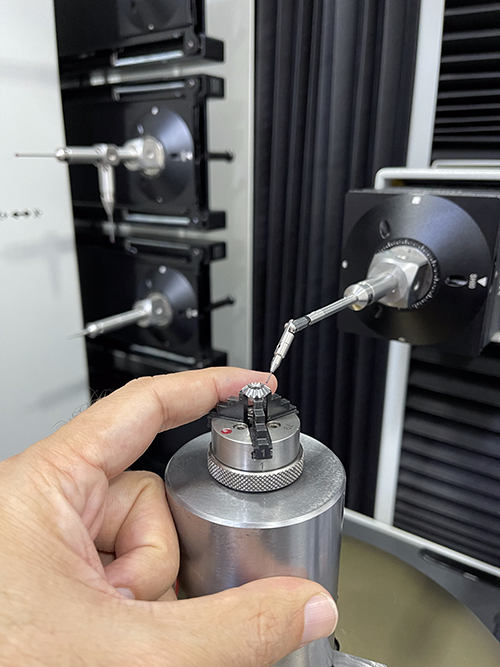
GMS – 0.5mod gear
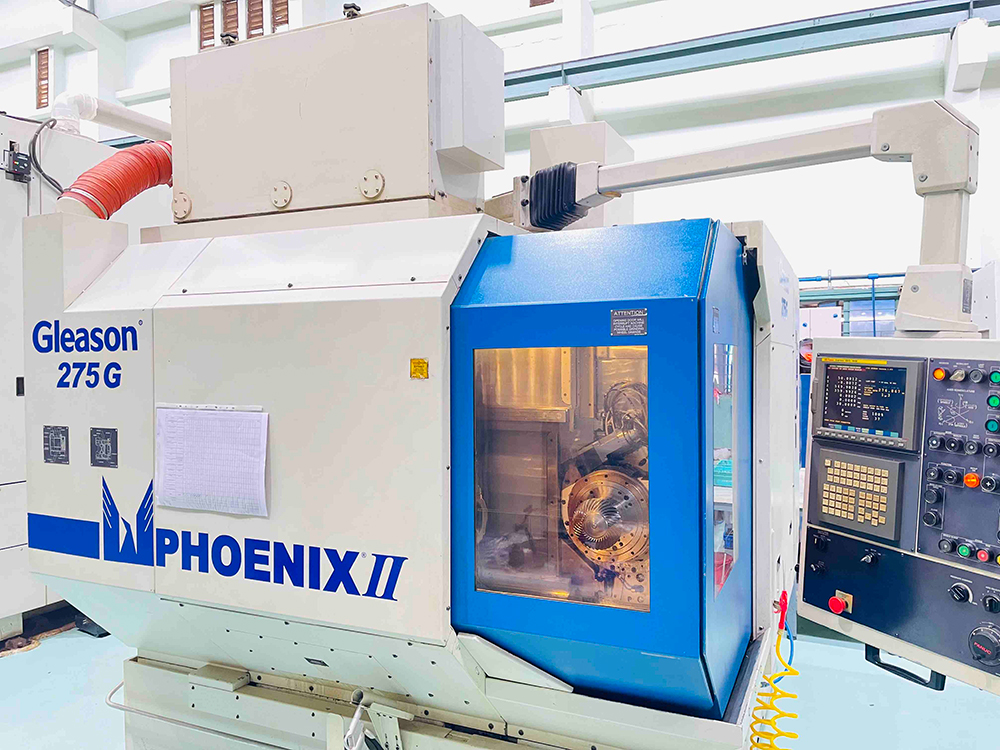
Gleason Phoenix 275G CNC bevel gear grinder with curvic coupling and straight bevel options
The lunar landscape imposes constraints that render some of our basic everyday assumptions invalid. The south pole of the moon experience immense temperature variations, and the parts and sub-assemblies all had to weather these extremes for as long as possible.
From all accounts, the program has been a great success and all the tasks assigned to the rover were completed successfully. Now, we have to wait and see if the rover can “wake up” and be mobilized once the south pole of the moon sees the sun again.
Like any other project, it is always team work; not only within our company, but also with the customer. First, we have to understand that this is unchartered territory, and yet the product must be absolutely “fail safe.”
It’s only the success that is known, but a number of times one has to fail to understand the concept of success in these cases. Finally, it is like doing a trapeze act without a net.
The audience being not only India but the world at large. Therefore, the serious commitment to ensure that there is no chance of failure was prime.
In this case, it was a combination of our talent, and the right kind of high-end machines that ensured the result.
In many such cases, we do our best to ensure that India has the talent to do such jobs. An important point to note is that just as the saying goes: “talent is nothing without opportunity”, we are grateful to ISRO for giving us this opportunity to prove our and the country’s capabilities.
On a global level, this makes a huge statement for us and our country. A recognition for us being a manufacturer who has the capability to take on “fail safe” products, and the world to know that India is second to none.
The import of such parts will no longer be required and, on the contrary, we can look forward to exporting such critical parts. Our ship has arrived in the true spirit of AatmaNirbhar Bharat.
Emerging technologies such as 3D metal printing will play increasingly significant roles.
The ability to print the parts you need onsite without holding any inventory is immensely appealing and practical. Nanotechnology is an extremely exciting space to watch as well.
We have seen how the transition to EVs accelerated the adoption of higher specification gears, albeit, fewer per assembly. Similarly, in other aspects of space and airborne vehicles, gears will certainly play a relative role though probably not as much as it has in the past.
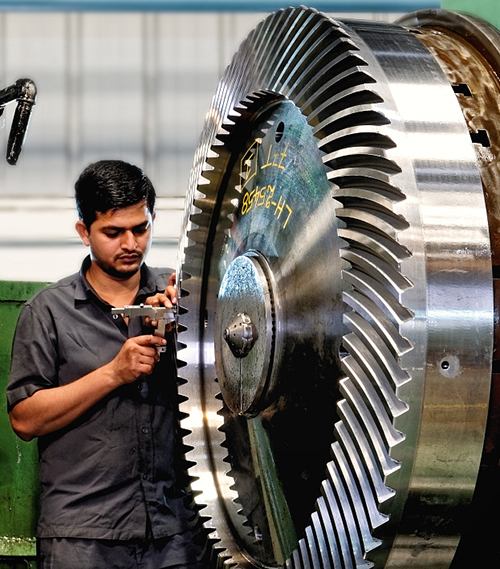
Large Spiral Bevel
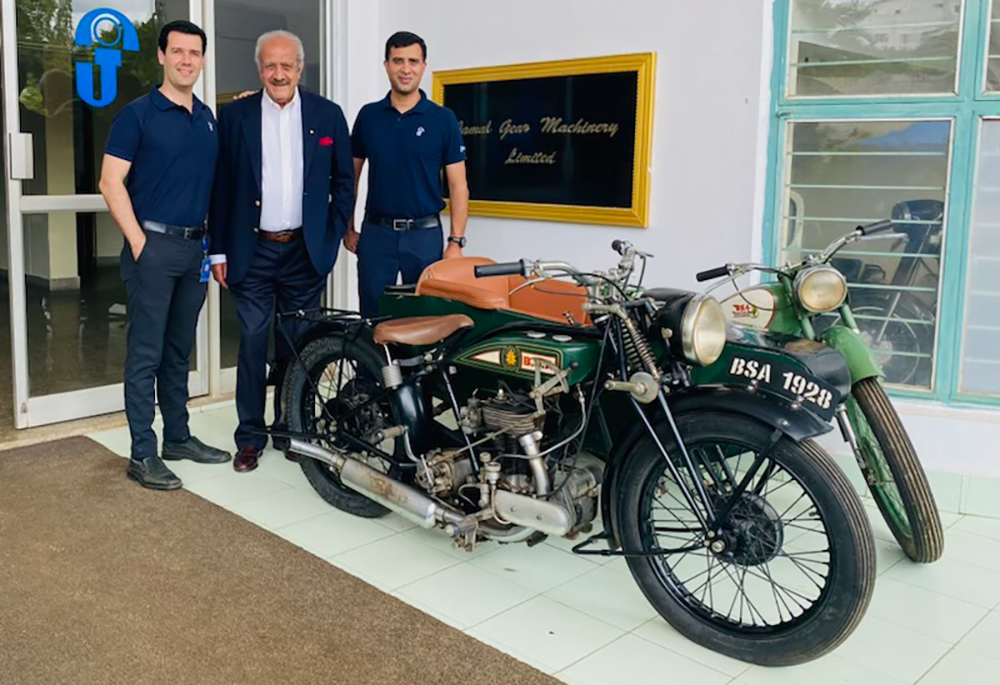
Bevel Gears India Team : (L) Mushtaq Jamal, (C) Sulaiman Jamal, and (R) Abdulla Jamal
Founded by Sulaiman Jamal in 1976, Bevel Gears India Pvt Ltd (BGI), specializes in the manufacturing of high precision bevel gears across an internationally broad spectrum from 5mm to 1,800mm.
It covers a number of applications under one roof like robotics, automation, aerospace, high speed machine tools, performance motorsport, aggregate, steel, mining, and space programs.
Their USP is high mix-low volume that allows them to address their customers’ requirements across international markets.
They also have the unique ability to manufacture both Gleason and Klingenberg bevel tooth forms and cover all manner of bevel gears – straight, ground spiral, angular bevels and high ratio hypoids (HRH) as well as selective bevel gearbox projects.
BGI is the first private company in India to install multiple CNC bevel grinding machines. These include both Klingenberg and Gleason bevel grinders.
Additionally, they are the only company to have CNC straight bevel grinding in the country. Another niche of theirs is curvic coupling grinding.
This is a result of the leadership team focusing on investing in bevel gear technology to stay relevant on a global scale.